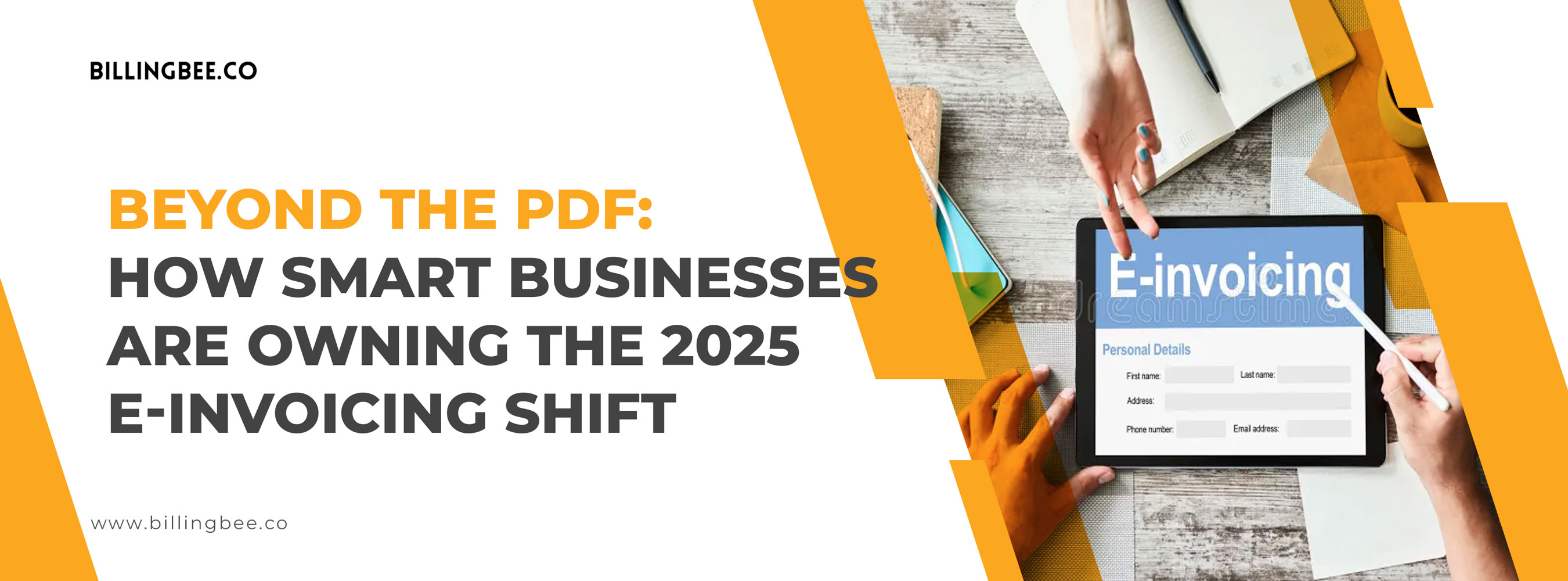Beyond the PDF: How Smart Businesses Are Owning the 2025 e-Invoicing Shift




📖 The Story Begins…
It was just another Monday morning when Emma, a finance lead at a growing international business, opened her inbox. A flagged message stared back at her:
“Reminder: e-Invoicing compliance deadline for two new regions—next month.”
Her heart sank a little.
She’d already spent the past six months helping her team transition away from manual invoicing in one region—now it was happening everywhere. Different formats. Different portals. Different rules.
It wasn’t just digital transformation anymore.
It was a compliance evolution—and it was happening fast.
💻 Why PDFs No Longer Cut It
Emma’s team had always relied on PDFs and spreadsheets—clean, familiar, easy to send. But now, tax authorities across multiple countries require structured, electronic invoice formats. Invoices needed to be validated and submitted digitally—sometimes instantly.
Her old workflows weren’t just outdated.
They were suddenly non-compliant.
She realized:
This shift wasn’t about technology. It was about future-proofing the business.
🌍 A Global Wake-Up Call
Each market introduced its own e-Invoicing regulations.
Some regions required invoices to be sent through certified government platforms. Others had strict rules about formatting, timelines, and validation. Manual entries left too much room for error—and the cost of getting it wrong was high.
Emma’s to-do list was growing, and so was the pressure.
That’s when she decided to stop treating invoicing like a back-office task… and start treating it like a strategic priority.
🧩 The Shift to Smarter Systems
Instead of patching together temporary solutions, Emma’s team embraced a dedicated e-Invoicing system that could support global requirements, automate workflows, and ensure every invoice met the right standards.
They built new habits:
✅ Automating invoice generation
✅ Reducing manual errors
✅ Validating invoices before submission
✅ Tracking payment status in real time
Suddenly, what used to take hours now took minutes.
And what used to cause stress now gave them clarity and control.
⚙️ The Results Spoke for Themselves
- Faster payments from clients who now had accurate, instantly processed invoices
- Less back-and-forth on tax or format errors
- Better visibility into receivables and cash flow
- A confident, audit-ready team that didn’t scramble at month-end
Most importantly, they weren’t reacting to compliance changes—they were leading through them.
🔍 Emma’s Big Takeaway
Through this journey, Emma learned what many are realizing in 2025:
- The days of emailing PDFs are over
- Compliance isn’t an add-on—it’s a must-have
- Automating invoicing doesn’t just save time—it unlocks strategic value
- Finance teams need tools that can adapt as regulations evolve
The businesses that thrive are the ones who don’t wait to be forced into change—they choose to stay ahead.
🔮 Looking Forward
Emma’s team is now exploring new layers of efficiency—like real-time cash flow forecasting, regional reporting dashboards, and deeper integrations with their billing tools.
She knows the world of finance won’t slow down.
But she’s finally in a position to move with it—not chase after it.
🧠 Final Thought
In 2025, smart businesses are going beyond PDFs and outdated workflows.
They’re embracing automation, structure, and global compliance as a competitive edge.
Because in a world where regulations shift fast and margins matter, owning the e-Invoicing shift isn’t just smart—it’s essential.